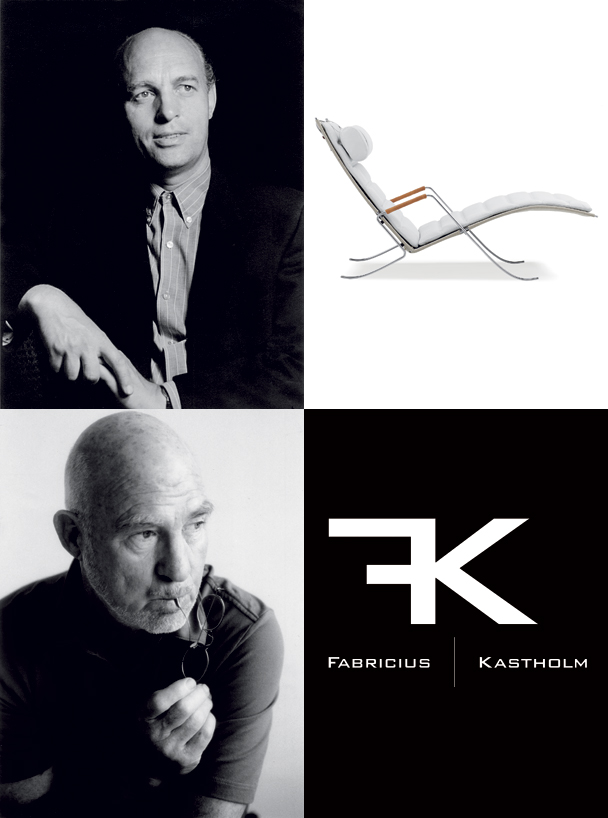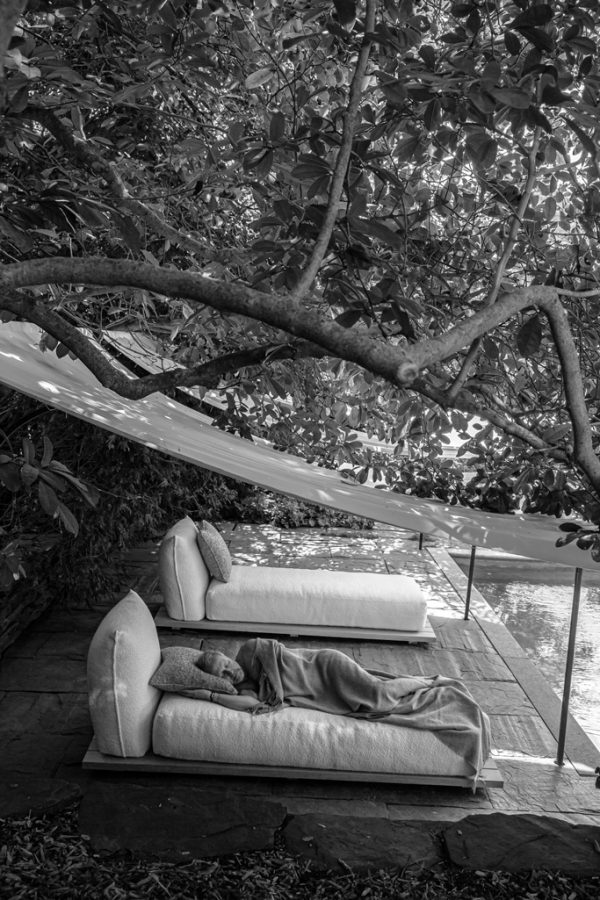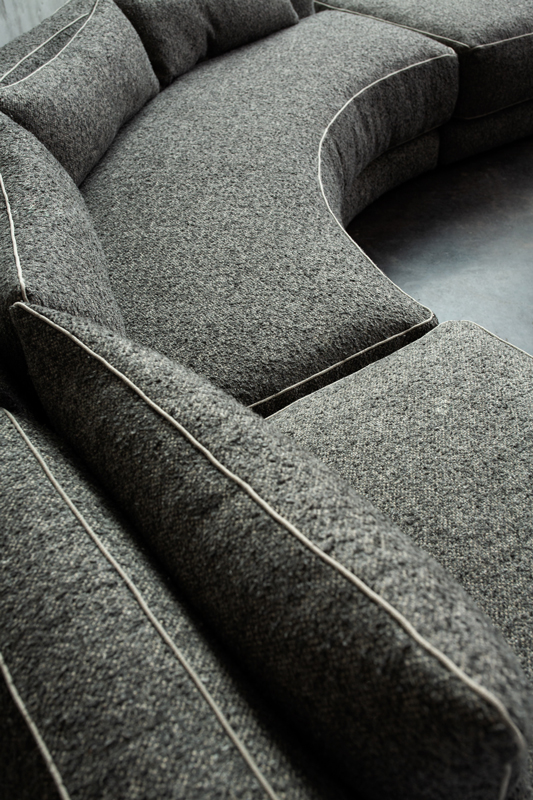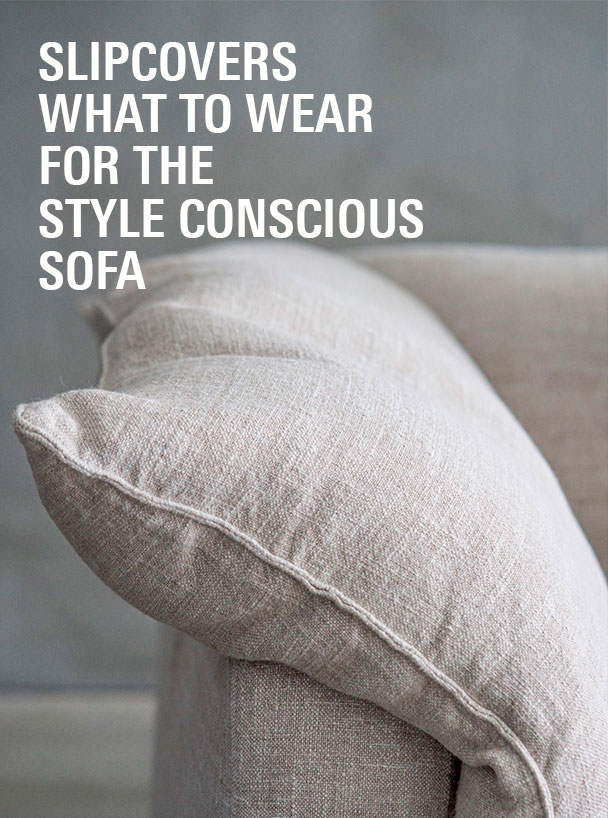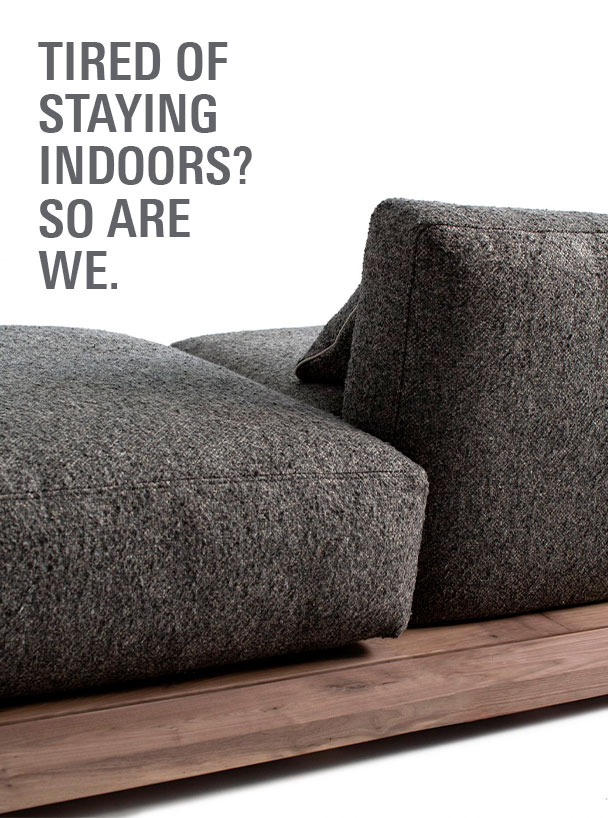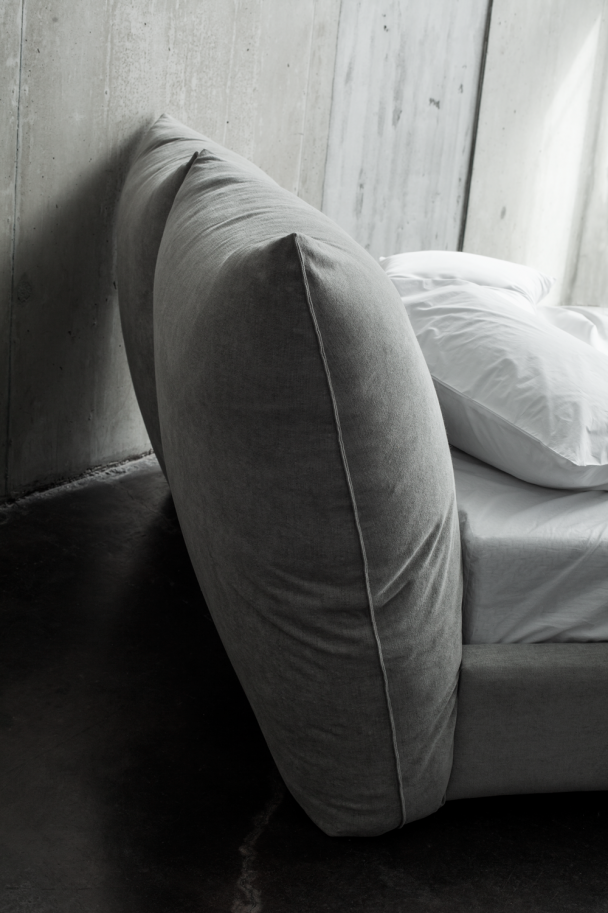Fabricius & Kastholm by Lange Production
If one examines the grand period of Danish furniture design in the 1950’s and 1960’s, a number of prominent personalities automatically appear on one’s inner search engine: Klint, Wegner, Juhl, Mogensen, Jacobsen and Kjærholm. This is the widely recognized list of masters, on whom everything from this period is focused thus the automatic response however the picture is much more subtle. This period also included designers, who in many cases were equal to the celebrities and in some cases more explorative in form language and materials. Among these one can find furniture designers Preben Fabricius and Jørgen Kastholm, who during a hectic period of eight years managed to design their way into Danish furniture history with a number of significant furniture pieces of extremely high quality, only to again disappear.
From wood to steel
Preben Fabricius was born in 1931 and was educated as a cabinetmaker in 1952 at the renowned master cabinetmaker Niels Vodder in Copenhagen. Later, Fabricius worked at architect Finn Juhl’s office where he collaborated in developing furniture for the UN building in New York. At that time, Juhl was the head of the School of Interior Design in Frederiksberg (1945-1955) and he convinced Fabricius to study furniture and interior design. After graduating in 1957, Fabricius had a number of different jobs, among which was a lengthy employment at architect Ole Hagen’s office. Fabricius fellow student, blacksmith Jørgen Kastholm, graduated the year after. His education was supplemented with a year of study at the Graphic College of Denmark, after which he was employed at Fritz Hansen Eft. A/S in Allerød and later also at Hagen’s office. Fabricius and Kastholm established their office in Holte in 1962 and started by designing attractive wooden furniture, though with limited success. The market was over supplied and instead the two partners decided to concentrate on furniture in steel and leather, with a form idiom that was more coolish and internationally oriented than what was otherwise common for the Danish designers of the time.
International breakthrough
The decisive international breakthrough occurred when Fabricius and Kastholm presented a complete series of conference and lounge/living room furniture to the German furniture factory Kill International at the Köln furniture fair in January 1966. The owner of the factory, Alfred Kill, had previously and unsuccessfully offered the two architects a job after having seen their collection at the Danish furniture fair in Fredericia in 1964. Kill International was already known as a manufacturer of high quality furniture and did not have any important competitors on the international market other than Walter Knoll from Germany and Herman Miller from USA, so it was an extremely unique situation that the two designers found themselves in and they exploited it fully. After the Köln fair, there were separate exhibitions in Europe and USA, and these led to a long series of outstanding furniture in the years that followed, even though one must admit that the form language gradually changed, it became rounder, less precise and not quite as elegant as the first collections.
The end
In 1973 Preben Fabricius and Jørgen Kastholm broke off their collaboration due to personal reasons. Fabricius got a job as a furniture design teacher at the School of Interior Design. Preben Fabricius died in 1984 at the age of 52. Jørgen Kastholm moved to Düsseldorf in Germany, where he established an office and continued designing furniture. In 1976, he was appointed professor of furniture design and product development at Bergische Universität Gesamthochschule Wuppertal. Jørgen Kastholm was until his death in 2007 active and has received a number of design prizes for his furniture.
Despite their great success, Fabricius and Kastholm’s work slowly but surely slipped out of sight, and if it hadn’t been for a few activists, their furniture would probably have completely disappeared.
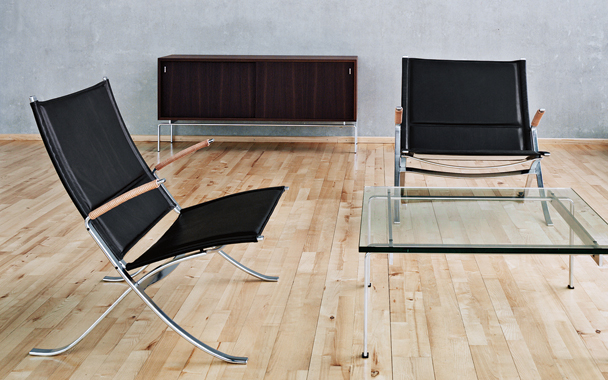
New production
In terms of Fabricius and Kastholm’s extensive production for Kill International, it was almost an accident that some of this furniture is on its way back on the market. In this case it was due to a young business man, Henrik Lange, who bought a pair of the architects chairs in an antique shop and became so enthusiastic about the form language that he felt the need to relaunch as much of the furniture as possible. Thus he contacted Jørgen Kastholm and Preben Fabricius widow and negotiated the taking over of the production rights in 2005. At the moment Lange Production has nine pieces in the collection.
Today everything is made at the same factory that Kill Internationall also used back in the 1960’s and 1970’s. The production tools were still laying there together with a large stock of the special designed steel. The leather work is done in Denmark where the furniture are also assembled and packed.
Fabricius and Kastholm demonstrate how an organic form can be tamed. It has been suggested that Fabricius and Kastholm simply imitated Poul Kjærholm, and it is also true that there is a great similarity, both in terms of form language and choice of materials just as great a similarity as can be found in the furniture from the wood men like Wegner, Juhl, Wanscher etc. It would almost be unnatural if these men were not inspired by each other. Kjærholm was the first in Denmark to work with spring steel as a primary material and therefore was a great source of inspiration for Fabricius and Kastholm. There is no doubt about this, but they were inspired just as much by the Bauhaus and Arne Jacobsen, and one should also remember that Jørgen Kastholm was a smith, and therefore had a great inherent knowledge of steel, which he quite naturally employed. If one considers the work of Fabricius and Kastholm, it is clear that they were not products of the Royal Academy and mathematician Kaare Klint. They were both educated as interior designers during Finn Juhl’s flamboyant period at The School of Interior Design, and thus are softened by his sculptural form notions, which are expressed in even their most stringent furniture.





